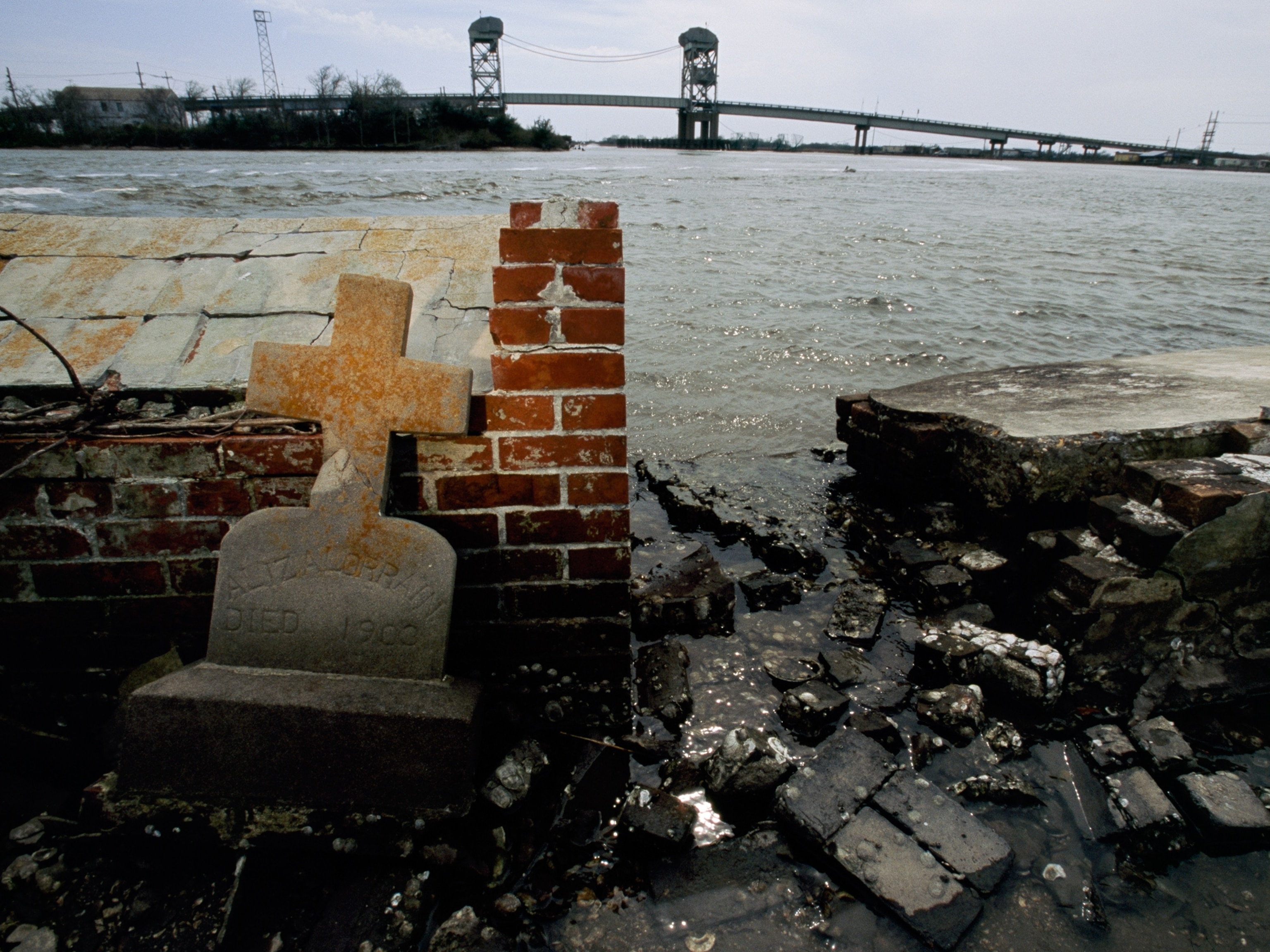
Louisiana's Bayou Is Sinking: Can $50 Billion Save It?
A debate over what to do in the face of rising seas and sinking land
Part of our weekly "In Focus" series—stepping back, looking closer.
When Terry Serigny was growing up in Leeville, Louisiana, in the 1950s, the Mississippi River Delta town was also known as Orange City for its many citrus groves. Today none of those groves remain. Leeville itself is vanishing, sinking into the Gulf of Mexico.
Old black-and-white photos hanging on the walls of Serigny's bait shop show wetlands, small ridged islands with trees, and oil derricks where there is now only open water. "Everything that you see here has all been washed away," he says, pointing to the photos. "There is nothing left to stop the saltwater from coming in."
The Mississippi Delta is one of the fastest disappearing land masses on Earth. It has lost nearly 1,900 square miles since the 1930s, and is still losing a swath about the size of a football field every hour.
"This land loss crisis," says the Louisiana Coastal Protection and Restoration Authority (CPRA), "is nothing short of a national emergency." And yet, as a slowly unfolding catastrophe, it gets much less national attention than acute disasters like Hurricane Katrina in 2005 or the Deepwater Horizon oil spill in 2010.




